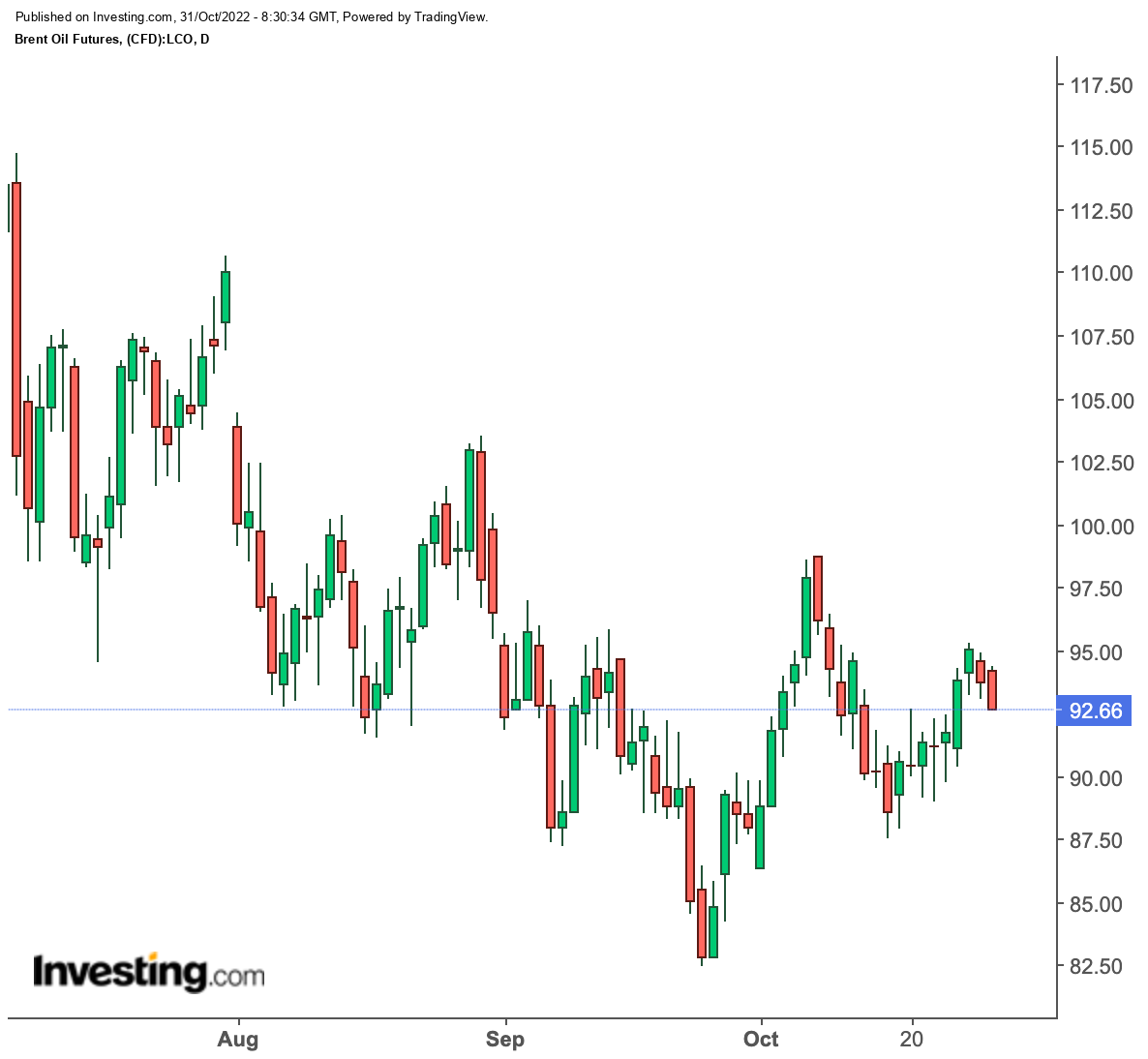- As OPEC+ aims to carry out production cuts, China announces more COVID curbs
- Slowing output in U.S. shale patch Permian Basin also limits oil’s downside
- Fed and BoE expected to announce 75-bps rate hikes
Against a backdrop of jumbo-sized rate hikes shaping up in the United States and the United Kingdom, China’s relentless curbs against COVID are hampering oil’s comeback bid on OPEC+’s production cuts.
Those long crude have more than just the Saudis, Russians, and other global oil producers at their back, as OPEC+’s output cut of 2 million barrels per day kicks in from Tuesday to fulfill the alliance’s aim of keeping a barrel steadily at around $90 or more.
In an outlook to be released on Monday, the Organization of the Petroleum Exporting Countries is also expected to stick to a view of oil demand rising for another decade, despite increasing use of renewable energy and electric cars, two OPEC sources said.
Slowing productivity in the Permian Basin—the top U.S. shale field—is another factor working in favor of oil bulls as major drillers in the patch report a drop in volume gains.
The hype over last week’s record U.S. crude exports was also feeding the frenzy of longs in the market, despite signs the spike may have been an anomaly, said those familiar with the volatility in crude shipments.
But as the world’s biggest importer, China’s demand picture for oil was too big to ignore and weighed more on crude prices than oil bulls would care to admit, said Stephen Innes, managing director of Singapore-based SPI Asset Management.
Chinese cities are doubling down on Beijing’s zero-COVID policy as outbreaks widened, dampening earlier hopes of a rebound in demand. The lockdowns came despite China’s central bank reaffirming its existing policy objectives in keeping liquidity reasonably ample and increasing credit support to the real economy, People’s Bank of China Governor Yi Gang said on Sunday.
John Kilduff, partner at New York energy hedge fund Again Capital, said:
“It’s push and pull, going on in both directions. OPEC+ and the rest of the long oil crowd are trying to ensure that oil doesn’t slip below the $80s while China just keeps throwing COVID curveballs at the market, one after another.”
By 04:30 E.T. (08:30 GMT), West Texas Intermediate, the benchmark for U.S. crude, was down 1.2%, at $86.84 a barrel, after a gain of around 3.5% over the past two weeks.

Brent crude, the global benchmark for oil, was also down around 1.2%, at $92.63 per barrel. Brent gained nearly 4.5% over the last two weeks.

Keeping investors across markets on tenterhooks were U.S. and U.K. rate hike decisions due in the coming days and what the Federal Reserve, particularly, could say about impending policy.
The Fed and the Bank of England are all but certain to deliver jumbo 75-basis-point rate hikes on Wednesday and Thursday, respectively, as the battle against sky-high inflation continues.
But with investors now on the lookout for signs that aggressive monetary tightening could start to slow, Friday’s U.S. jobs report for October and Monday’s Eurozone inflation report will be in the spotlight.
And with the U.S. earnings season at the halfway mark, the week ahead will show whether U.S. equities can continue to take disappointing corporate results in stride. Here’s what you need to know to start your week.
Investors will particularly be looking to Fed Chair Jerome Powell for any hints that the future pace of hikes could slow after recent softer economic data.
Financial markets are currently pricing in a smaller 50-basis-point rate hike at the Fed’s December meeting and another 50 basis points over the first two meetings of next year.
Disclaimer: Barani Krishnan uses a range of views outside his own to bring diversity to his analysis. For neutrality, he sometimes presents contrarian views and market variables. He does not hold positions in the commodities and securities he writes about.
